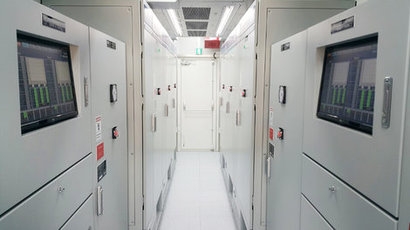
These two projects, representing 12 MWh and 28 MWh of ESS capacity, will help to deliver the safe, energy dense storage the projects need for renewable capacity firming and energy time shifting. The first project was installed at three sites in South Korea’s Chungchoeng region in collaboration with the project’s renewable energy system developer, Razzler, who is managing Engineering, Procurement and Construction (EPC). For this project, Kokam delivered and installed 5 megawatts (MW)/12 MWh of total ESS capacity to support a total of 5 MW of PV system capacity. The second project is for Korea Midland Power Co., Ltd., for nine sites located throughout South Korea. This project consists of 8 MW/28 MWh of total ESS capacity coupled with a total of 10 MW PV system capacity. All 28 MWh of ESS capacity is scheduled to be installed and in operation by the end of 2018.
“With more than 200 MW of Kokam’s battery technology sold to ESS customers around the world, these two new projects further strengthen Kokam’s position as leader in delivering reliable, high-performance ESSs that enable renewable energy, utility, industrial, and other customers to maximize the value of their energy storage projects” said Ike Hong, vice president of Kokam’s Power Solutions Division. “These two new projects and the introduction of our new high-energy 100 Ah HE NMC cell illustrate that we provide the technology and expertise that PV and other renewable energy project developers and owners need to integrate safe, high-energy storage into their projects.”
The majority of the ESS capacity for the 28 MWh Korea Midland Power Co., Ltd. ESS project uses Kokam’s newly developed 100 Ah HE NMC cell. This next-generation, high-energy cell has a new active material in the anode and includes a new additive to the cell’s electrolyte, increasing the cell’s energy density by 26 percent, to 204.4 watt hours per kilogram (Wh/kg), without reducing its expected life. Kokam ESS solutions with the new cells help renewable energy project developers and owners lower the levelised cost of energy (LCOE) and increase the ROI for ESSs used to support PV and wind systems.
Kokam’s ESSs feature three levels of protection, with a Battery Management System (BMS), a Battery Protection Unit (BPU), and a fire fighting systems. In addition, all Kokam battery modules use flame-retardant material, further increasing the safety of the ESS.
As part of its ‘Renewable Energy 2030’ plan, which aims to increase renewable energy’s share of South Korea’s energy generation from 4 percent in 2016 to 20 percent by 2030, South Korea is incentivising the installation of ESS with PV systems. The government is granting a Renewable Energy Certificate (REC) weight of 5.0 to all electricity discharged from ESSs coupled to PV power systems during off-peak times (before 10:00 am and after 4:00 pm).
South Korea is encouraging the installation of ESSs with PV systems because ESSs address several of the problems caused by the intermittent energy generation of renewable resources. ESSs can store energy generated by the PV systems when energy supply is high or demand is low, and then discharge this energy later in the day when energy supply is low or demand is high, increasing the value of the energy generated by the PV system. In addition, ESSs can perform ramp rate control, stabilizing the amount of energy delivered by a PV system to the grid during the day, and provide other ancillary services to maintain grid stability.
For additional information:
Kokam Co Ltd

